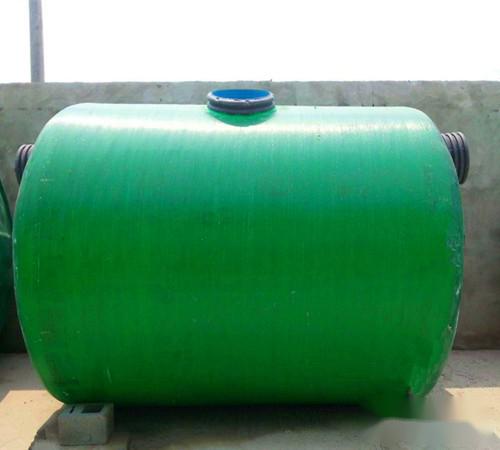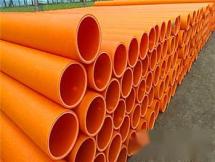Website: www.xgguan.com Phone: 18848857820
Fiberglass septic tank refers to a device made of synthetic resin as the matrix, reinforced with fiberglass materials, specifically used for treating domestic sewage. Hefei Shuangqiang fiberglass septic tank is a composite material product actively promoted by the state. Its advantages, such as lightweight, high strength, good toughness, corrosion resistance, bright colors, and a smooth mirror-like finish, have far surpassed similar products made from ceramics, hard plastics, and steel. It is widely used in chemical, petroleum, construction, textile, aviation, navigation, transportation, electricity, metallurgy, machinery, medical, food, paper-making, and environmental protection industries.
【Construction】
Cleanout Well
1. After backfilling meets construction specifications, a cleanout well (inspection well) can be built on the tank body. There are two types of cleanout wells: brick masonry wells and prefabricated reinforced concrete wells.

2. To prevent leakage from the brick masonry well walls, the internal and external walls of the well should be coated with a waterproof mortar layer, 20mm thick (1:2 waterproof mortar, with 5% waterproof agent based on the weight of the cement), and the corners should be smoothed at a 45-degree angle. For areas with groundwater, apply two coats of hot asphalt (or other waterproof coatings) on the outside of the well, then backfill to the required ground level.
Construction Precautions1. When excavating the foundation trench, geological conditions should be understood.
2. The installation location and burial depth of the fiberglass septic tank should strictly follow the design requirements for line placement and positioning.
3. After positioning the fiberglass septic tank, backfill soil promptly, filling the tank with water to prevent displacement. The backfill soil should be screened, free of sharp stones and construction debris. If there is no groundwater, compact the soil to a density of 0.95. Special attention should be paid to filling the area around the bottom of the tank with clean soil or yellow sand. If there is groundwater, fill the area beneath the tank with clean soil or yellow sand to ensure even force on the tank's fixed position.
4. During rainy season construction, drainage facilities should be in place to prevent water accumulation in the foundation pit and slope collapse, while keeping the tank filled with water to prevent floating and displacement.
5. Construction should adhere to relevant engineering construction and acceptance specifications.
【Advantages】
1. Cost-effective
The fiberglass septic tank is produced with factory-based, mechanized, mass production techniques, using new processes and materials, resulting in a compact design with a large effective volume.
2. Labor and time-saving
The fiberglass septic tank has an overall shape, is lightweight, strong, and easy to install.
3. Space-saving
The fiberglass septic tank saves excavation area.
4. High efficiency
The fiberglass septic tank has excellent sealing performance, capable of efficiently processing waste, with anaerobic decomposition effectiveness exceeding that of traditional septic tanks by more than twice.
5. Environmentally friendly
The fiberglass septic tank is produced as a whole, has good sealing performance, does not leak, does not pollute surface water, and does not corrode the surrounding plants, trees, and electrical cables. The tank employs high-level siphon drainage, multiple sedimentation, and purification processes.
6. Durable
The fiberglass septic tank is made from new fiberglass materials, resistant to aging and acid-base corrosion, with a service life of over 50 years.
7. High pressure resistance and compressive strength
The fiberglass septic tank utilizes international-grade 50 steel resin sealing and a cylindrical shape, providing several times the compressive strength compared to polygonal or square shapes.
8. No subsequent management required, long sludge removal cycle
The fiberglass septic tank is underground, requires no power, and does not need maintenance or management afterward.
【Usage Instructions】
1. The selection of the fiberglass septic tank depends on different buildings, calculated by the design personnel of individual projects to determine design parameters.
2. The location setting of the fiberglass septic tank should be such that it does not affect the building's foundation; generally, it should be at least 10m away from drinking water reservoirs and not less than 30m from underground water extraction structures. When the building's foundation plane is higher than that of the septic tank, the distance from the septic tank's outer wall should not be less than 2m. When the building's foundation plane is lower than that of the septic tank, the distance from the septic tank's outer wall to the building's outer wall should not be less than 5m.
3. The overall fiberglass septic tank should have a minimum cover soil of 0.3m and the maximum cover soil should not exceed 3m. In cold regions, when the temperature drops below -10°C, the cover depth of the septic tank should not be less than 1.2m. In areas where the average temperature during cold months is below -13°C, design personnel should consider setting the fiberglass septic tank below the frost line of the region.
4. The fiberglass septic tank can be installed under green belts, lawns, or sidewalks, with a cover not exceeding 1.5m; it can also be installed on road sections.
5. Manhole covers: For areas without vehicle access, use locked lightweight double-layer manhole covers and bases; for areas with vehicle access, use locked heavy-duty double-layer covers. The fiberglass septic tank also considers the needs for community greening or paving on roads and squares, with cast iron or high polymer manhole covers flush with the ground. In paved areas, the manhole cover may be lowered appropriately beneath the paving bricks, ensuring that the paving can be opened when the manhole cover needs to be accessed.
6. If the volume of the fiberglass septic tank exceeds 50 m3, it can be set up using two single tanks in parallel or series. If in series, the design personnel must notify the manufacturer in advance, and the gap between the outer walls of the tanks should not be less than 500mm.













